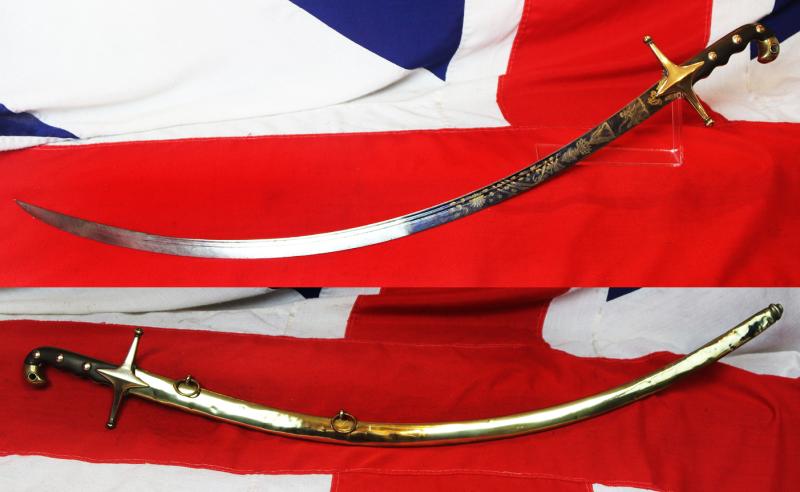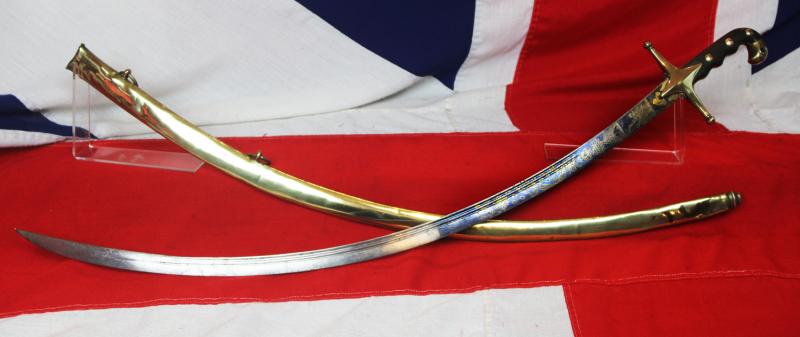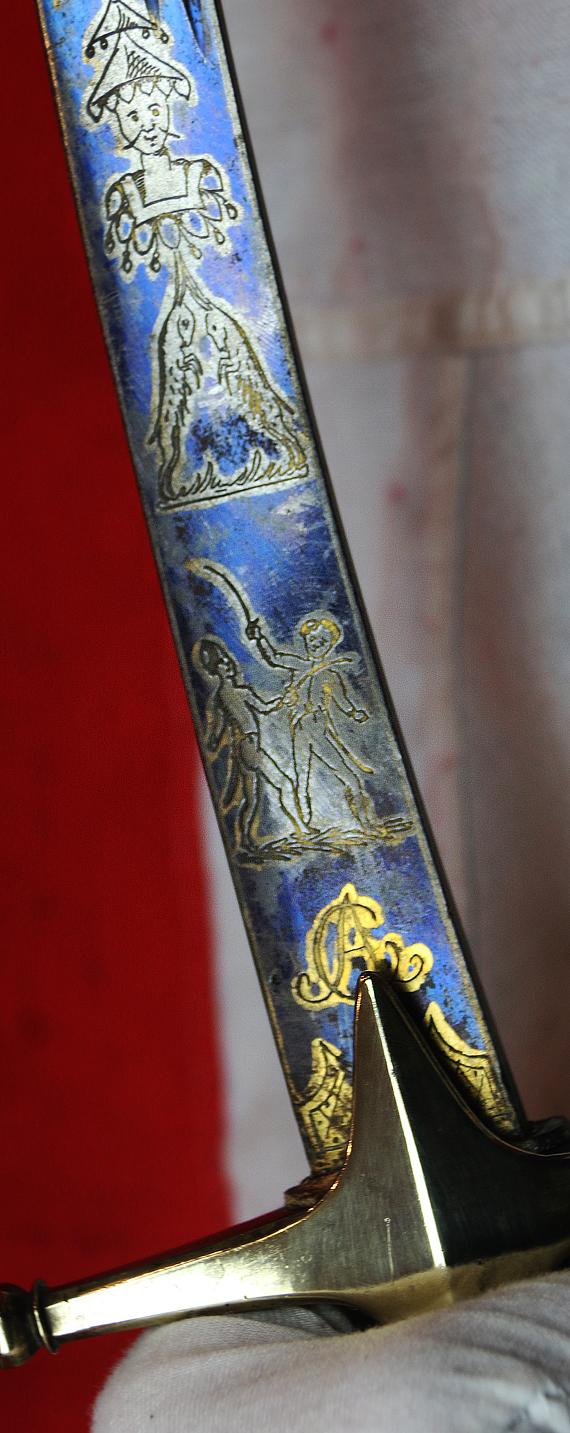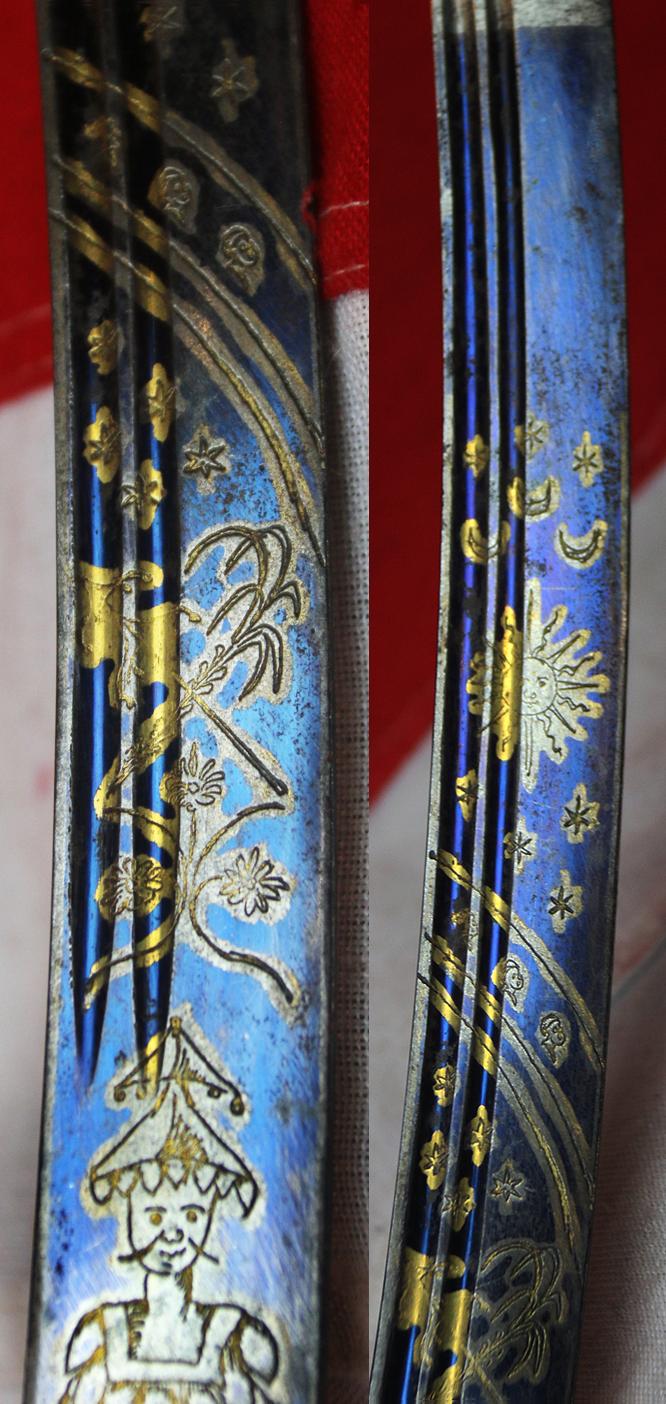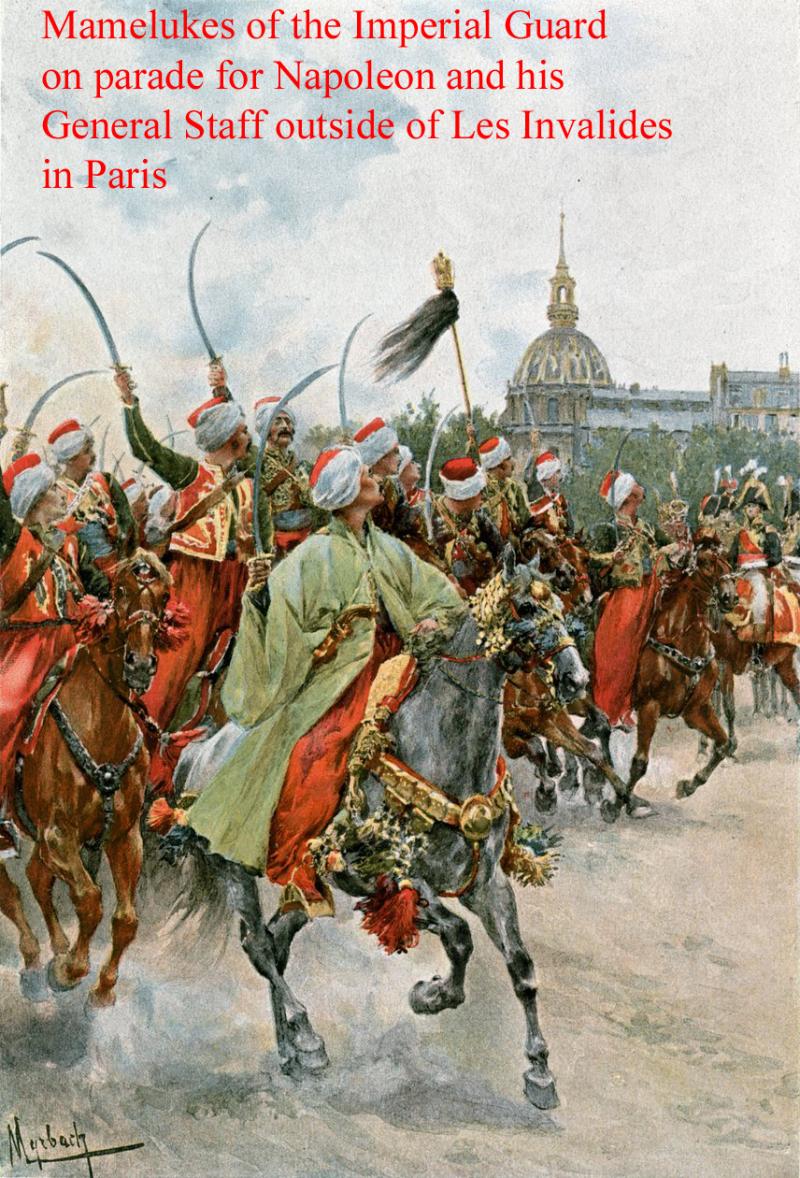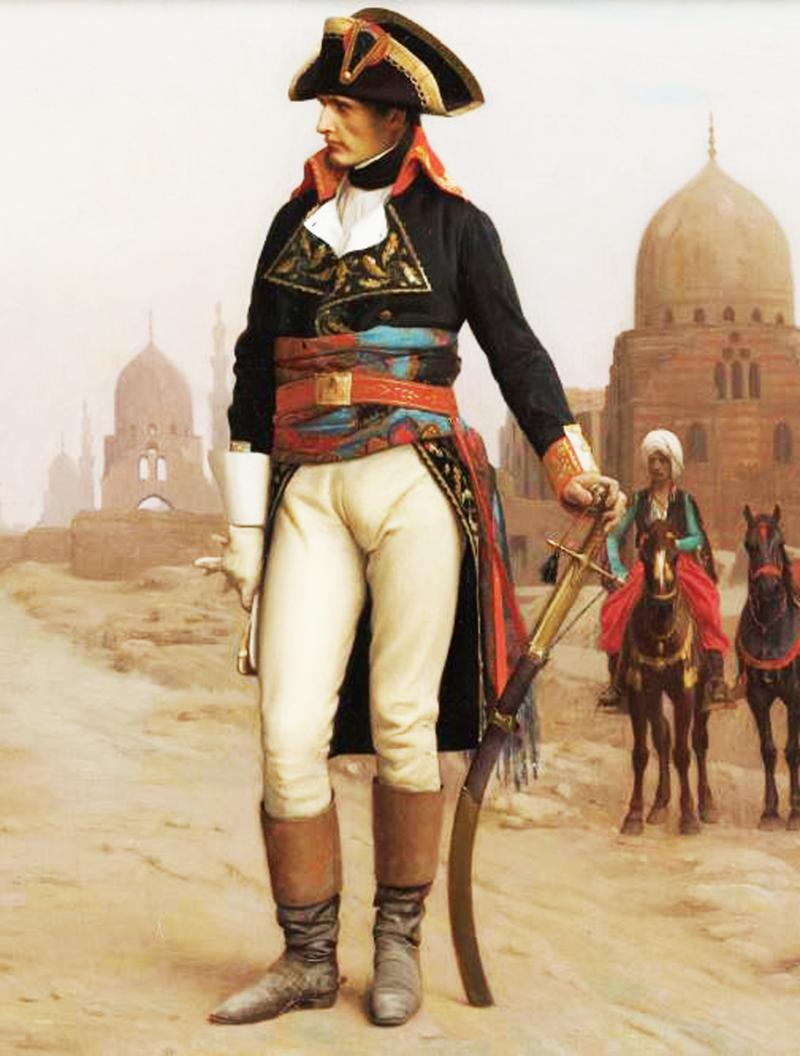Museum Grade French Ist Empire Napoleonic Imperial Guard Senior Officer’s, Finely Engraved ‘Blue And Gilt’ Sword. In Wonderful Condition & And Likely The Best We have Ever Seen Outside of The Les Invalides Musee de l’Armee, Paris of Mameluke of the Garde
One of the rarest and most beautiful styles of Napoleonic combat and dress sabres to be seen, in, or out of, Les Invalides Musee de l’Armee in Paris. The finest Napoleonic museum in the world.
A blue and gilt of luxuriant quality combat-dress sabre of a senior officer of the Mamelukes of the Imperial Guard, in its original scabbard. The hilt is in superb condition, with straight quillon, and has carved horn hilt grips, affixed with triple domed brass rivets, and inner finger rests, with a brass stylised bird's head pommel, with a circular rimmed aperture for a sword knot.
This sword is so fine that it is very likely the sword of the commanding officer of the Mameluke Garde, a sword made and signed by Charles Francois Alphand, a former captain of artillery and Director of the Maubeuge armoury, a contemporary of Boutet, Director of the Versailles armoury. Charles Francois Alphand, also used a smaller version of his same gold poincon of an intertwined AC, stamped upon the barrels of the pistols made for the Garde Du Corps. The absolute stunning deluxe blue and gilt double fullered blade, is engraved in the Napoleonic Marmaluke Sabre A L'Orientale form, with a Chinese mandarin wearing a traditional hat and drooping moustache, a hand to hand sword combat scene between a Mamaluke and a European officer, a sun, crescent moons and a constellation of stars, a row of three turbaned heads, palm trees and parasol, a pair of rutting stags, and at the forte a large poincon of an AC entwined, in gold, of the Director Charles Francois Alphand. Each side of the blade mirrors the engraving on the other side. Both sides have excellent blue and gilt with just commensurate light wear for age. The plain brass scabbard is in the same form as the plain brass scabbards made for the official rare daggers or the Mameluke Garde.
A picture in the gallery is of a portrait of Napoleon in Egypt with his identical mamaluke sabre.
Mamelukes of the Imperial Guard;
A squadron of Mamelukes (Escadron de Mamelukes) returned with Napoleon from the Egyptian Campaign in 1799. They were inducted into the Guard, and usually attached to the Chasseurs à Cheval. The squadron was never increased to a regiment in strength.
The Imperial Guard ( Garde Impériale) was a group of elite soldiers of the French Army under the direct command of Napoleon I, and grew considerably over time. It acted as his bodyguard and tactical reserve, and he was careful of its use in battle. The Guard was divided into the staff, infantry, cavalry, and artillery regiments, as well as battalions of sappers and marines. The guard itself as a whole distinguished between the experienced veterans and less experienced members by being separated into three sections: the Old Guard, Middle Guard and Young Guard. The Young Guard was virtually annihilated in the Battle of Krasnoi during the French invasion of Russia.
Throughout the Napoleonic era there was a special Mamluk corps in the French army. In his history of the 13th Chasseurs, Colonel Descaves recounts how Napoleon used the Mamluks during the French campaign in Egypt and Syria. In the so-called "Instructions" that Bonaparte gave to Jean Baptiste Kléber after departure, Napoleon wrote that he had already bought from Syrian merchants about 2,000 Mamluks with whom he intended to form a special detachment.
On 14 September 1799 Kléber established a mounted company of Mamluk auxiliaries and Syrian Janissaries from Turkish troops captured at the Siege of Acre. Menou reorganized the company on 7 July 1800, forming 3 companies of 100 men each and renaming it the "Mamluks de la République".
In 1801 General Jean Rapp was sent to Marseille to organize a squadron of 250 Mamluks. On 7 January 1802 the previous order was canceled and the squadron reduced to 150 men. The list of effectives on 21 April 1802 reveals 3 officers and 155 other ranks. By decree of 25 December 1804 the Mamluks were organized into a company attached to the Mounted Chasseurs of the Imperial Guard. The officers were Frenchmen, the troopers were a mixture of Syrians, Greeks, Circassians, Crimeans, Armenians, Egyptians, Georgians, Arabs and Turks. Individuals came from Albania, Hungary, Malta and Tunisia. Every Mameluk was armed with two brace of pistols, a very curved saber, dagger, mace and eventually a battle-ax. During the remainder of their service the Mamlukes were issued at various dates with carbines, a form of blunderbuss and a musket. These firearms were manufactured by the Manufacturie de Versaillies.
In 1804 the company of Mamelukes had: 9 officers (6 of whom were Arabs), 10 NCOs (6 of whom were Arabs), 10 brigadiers (8 of whom were Arabs), 2 trumpeters and 92 privates.
Mamluks fought well at the Battle of Austerlitz on 2 December 1805, and the regiment was granted a standard and its roster increased to accommodate a standard-bearer and a trumpet. A decree of 15 April 1806 defined the strength of the squadron as 13 officers and 147 privates.
Pictures in the gallery;
Mamelukes of the Imperial Guard
on parade for Napoleon and his
General Staff outside of Les Invalides
in Paris. By Felicien Baron de Myrbach Rheinfeld
Painting by 19th century artist Jean-Léon Gérôme, 'Napoleon in Egypt',
It was originally owned and sold by us some years ago to a Napoleonic collector who has spent the past two years researching its history in Paris.
The original scabbard has twin ring mounts, and is very good, for its age, just commensurate wear and small surface denting
Code: 25197


